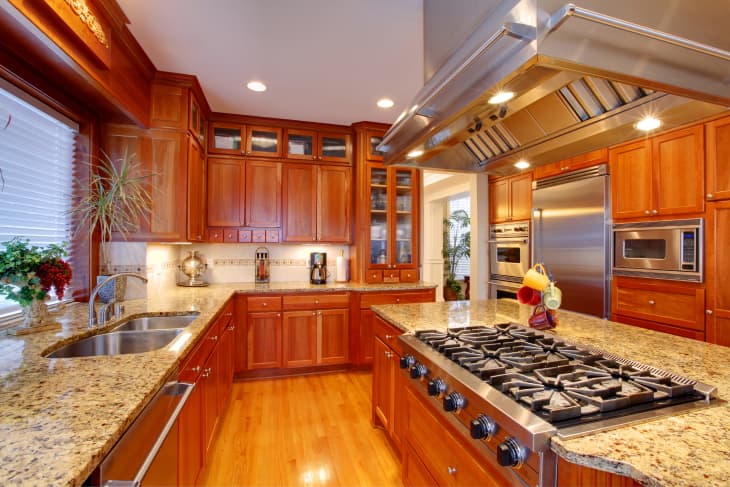The 5 Biggest Kitchen Island Mistakes Realtors Always Notice

It might sound like a cliché at this point, but most real estate agents will agree that the kitchen really is the heart of the home. In fact, research from Zillow showcased that of the 10 factors people look at when buying a home, kitchen elements represent six of them — which means that if you’re looking to sell or buy a home, you should absolutely pay attention to this space the most.
One such important feature that buyers look to when it comes to their kitchen is the island: After all, it’s the area that most people like to sit around, and it often gets the most attention. “Kitchen islands are great, as they offer tons of cooking and baking counter space, and are also perfect for hosting a buffet,” says Joan Kagan, a real estate broker at The Agency in New York. “I just did a challah bake with six girlfriends, and we all gathered around the kitchen island. It was warm, friendly, and not too crowded.”
But, as is the case with most spaces, there are certain considerations you need to take in order to make sure your kitchen island puts its best foot forward, making a wonderful first impression for both guests and potential buyers. Real estate agents share the kitchen island mistakes they always notice, so you can avoid them to the best of your ability.
Having a vent above your kitchen island, or a stove on it.
Having a stove on your kitchen island is a big no-no — especially if you have kids. “If people with kids want to use the kitchen island as an eating space, there’s a big danger with having an open stove on the island, as the kids could reach it and burn themselves,” says Megan Blum, an agent at Flux Real Estate.
If you don’t have kids, however, Kagan still recommends against it, especially because stoves come with vents — and a vent is an eyesore for many if it’s above the island. “A stovetop on a kitchen island seems dangerous to me because the burners are usually accessible from multiple sides,” she adds. “Also, if you have a vent above the island, it takes up a lot of eye-level space, which takes away from the open feeling of a kitchen island.”
Using open shelving for your island.
“I don’t recommend open shelving in a kitchen island at all — it makes the island look cluttered, instead of a beautiful, clean space you want people to hang out around,” says Blum.
Still, that doesn’t mean you can’t use your island as storage space (as a matter of fact, in smaller homes, it’s kind of a necessity), but there’s a way to do it smartly. Concealed shelves, hidden drawers and counters, and closed cabinetry are all ways to use your island for extra storage, without making it look too busy.
Using a boring, bland material.
“I always look at a kitchen island as the focal point of the home, which is why I like to have it in a material that stands out,” says Matthew Melinger, a real estate agent at Brown Harris Stevens. “Opting for a ‘statement’ stone slab or different wood finishes that complement the rest of the kitchen (rather than blend in) will automatically elevate the space.”
Consider using a material that ties in with the rest of your color scheme, while still maintaining its own personality (think: striated marble, mahogany tones, or some fun tile).
Forgetting about the lighting.
And of course, when you’re focusing on making your kitchen island such a focal point, you need to consider the lighting around it as well. “A big mistake that I often see is that people don’t decorate their kitchen island with lighting, so to speak,” says Perrin Carrell at Agent Advice.
“Kitchen islands are the places that get the most attention, so make sure they’re well-lit.” A pendant light or chandelier is a great way to add both style and function.
Not making it large enough to accommodate ample seating.
“The best part about a kitchen island is the ability to have a slew of your nearest and dearest around it, laughing and cooking and just generally enjoying each other’s company,” says Carrell. “If you’re planning on using it as a breakfast bar or dining area, make sure you have enough stools or chairs for everyone.”
It’s also important, he adds, to consider the sizing of your island with regard to your seating — you don’t want the chairs to be so large that they overwhelm your dining area, or so small that there’s too much space in between chairs. “Proportions are key!” he adds.